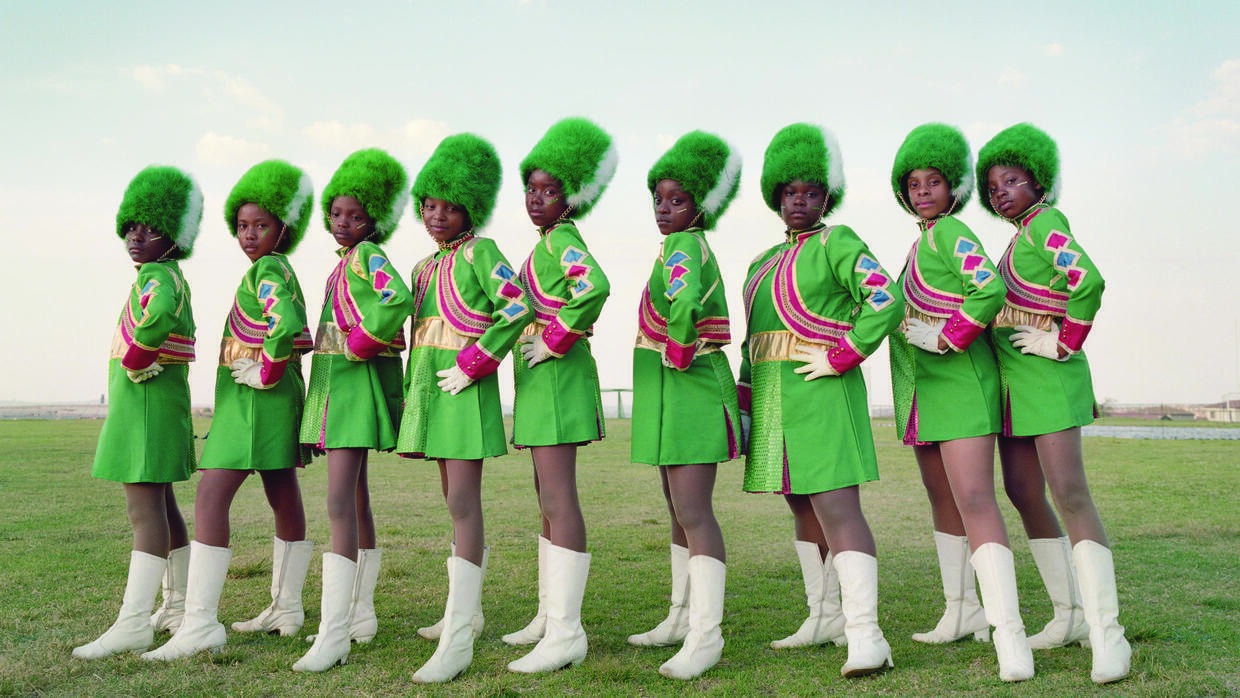“Africa-seen by African photographers” at the Völklinger Hütte
Text by: Siegfried Forster
When mining in South Africa echoes the industrial history of Germany. Nine African artists, including Osborne Macharia ("Black Panther"), compose "Africa - seen by photographers" at the Völklinger Hütte World Cultural Heritage, near the Franco-German border. Interview.
Publicity
Read moreRFI: Frank Krämer, you are the curator of the exhibition Africa - seen by photographers which has just reopened. The closure due to the crisis caused by the coronavirus was also a test for your online services: website, YouTube, Google Street View, 3D visit. Has this offer been successful ?
Frank Krämer: It was a very good opportunity to show that we are still there and that we are continuing to work on our program. Our virtual offers, for example on the Africa exhibition , were very well received.
How many visitors have benefited from your online offers ?
I can't give you the exact numbers, but I think our strategy has worked. Many people have asked us when we can discover our offer again on site. During the coronavirus pandemic, we explained our themes and thus prepared visitors for their next site visit.
After the reopening, will the online offer be expanded ?
I must admit, one of the positive effects of the coronavirus crisis is that we have worked more intensively on online offers. And we are going to continue in this direction, with creative and artistic programs, for example on content on work culture, industrial culture or in relation to artistic interventions.
In 1994, the Völklinger Hütte was the first monument of heavy industry to be classified as world cultural heritage by Unesco. Today, this gigantic former steel complex, transformed into a European center of art and industrial culture, is known beyond the borders of Germany, among other things thanks to the International Biennial of Urban Art. What sparked the idea of presenting an exhibition on Africa with African photographers there ?
The Africa exhibition has a lot to do with the Urban Art Biennial. This gave the first meetings with this new African photography. In African photography, a theme often arises: urbanization. So we had the idea of bringing this theme of African photography here. The Völklinger Hütte, as a world cultural heritage, is an ideal place to promote this dialogue between cultures. The photographs of the invited photographers above all show the creative contribution of this Africa that thrills.
These nine very famous photographers present works of very large format. To what extent is this exhibition on Africa unprecedented ?
The photographers show a very surprising and original vision of Africa. Often, the look on Africa is obscured by stereotypes and stereotypes. It was important to let these African photographers tell us about Africa from their point of view. How they show their country, their city, their center and everything around them.
Among the surprising subjects, there is a whole series around mining [ Legacy of the Mine , by South African photographer Ilan Godfrey, editor's note ], it resonates with the history of the Völklinger Hütte. There are also street photographs. Other images evoke dance, pop culture, underground movements [ such as the breakdance culture in Uganda, by Kibuuka Mukisa Oscar, editor's note ]. Some very elaborate portraits [ of the Senegalese photographer Omar Victor Diop, note ] have a link with the very famous African photography of the 1950s and 1960s.
How did African photographers participate in the concept of the exhibition ?
It was created in close connection with the artists. After studying the history of the Völklinger Hütte, the artists offered images on their own, including works that have already been presented and awarded at other major exhibitions and biennials. Africa - seen by photographers is largely the work of guest photographers.
Does this mean that artists like Kenyan Osborne Macharia or South African Alice Mann were on site in Völklingen ?
The photographers were not there, but there were numerous video conferences. We had a very intense exchange. All the artists wanted to know more about the history of this place and the previous exhibitions, in particular the Urban Art Biennials. They really appreciated the spirit of this site. It was a very direct and fascinating exchange which made it possible to show Africa from a completely different angle.
I am thinking in particular of Osborne Macharia. It strives to rethink and reinvent Africa. Here, the artist presents his images in the rust-brown atmosphere of the Möllerhalle [ in this 10,000 square meter room, raw materials for the blast furnaces were stored, note ]. For him, it was a very exciting place to show his surreal and futuristic images. Same for Alice Mann, the South African photographer wanted to show her photos here.
These photographers have often been presented at fairs and biennials in Africa. Is there cooperation between the Völklinger Hütte and African institutions? Do you plan to run this exhibition on the African continent ?
We had not yet considered the possibility of a traveling exhibition. But we are very interested in the fact that this exhibition is seen by the greatest number. Besides the photographers, we were also in contact with one or the other museum or network. This exhibition rests on many feet. And as this exhibition was produced by African photographers, it makes you want to show it at some point also in Africa.
► “Africa - seen by photographers”, until November 1, 2020, at the Völklinger Hütte World Cultural Heritage, in Germany.
Newsletter Receive all international news directly in your mailbox
I subscribeFollow all international news by downloading the RFI application
google-play-badge_FR- Photography
- Culture Africa
- Germany
- Exposure
- South Africa
- Uganda
- Senegal
- Kenya

